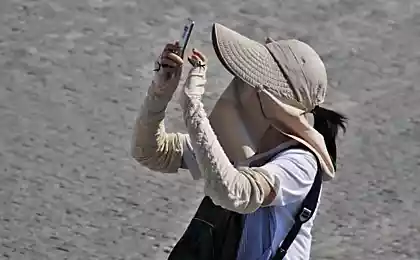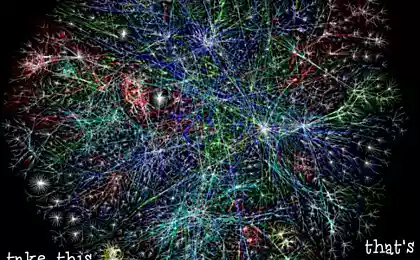532
10 amazing predecessors of modern technologies
People today can not imagine their life without Internet. The computational power of devices increases exponentially, while they themselves become less and less. But only a couple of generations ago, we can say that living in an information dark ages.
Described below are ten technologiesthat represent attempts to give consumers something that today we take for granted:
1. Phone services
Before the advent of personal computers the most popular device in which conducted transfer of information, had a telephone. A big part of what we now can give the smartphone was available through telephone services. For example, before almost every village USA could call a number and receive information about the current time and air temperature. Some of these services are still used.
By the mid-twentieth century, the list of phone services has increased considerably. It was added to the so-called "lines of communication for collective use" (they can be considered as the first social networks), and even music services, which on request was broadcast tunes and songs. In the 1990-ies the most popular of them were Moviefone, which now exists as an app.
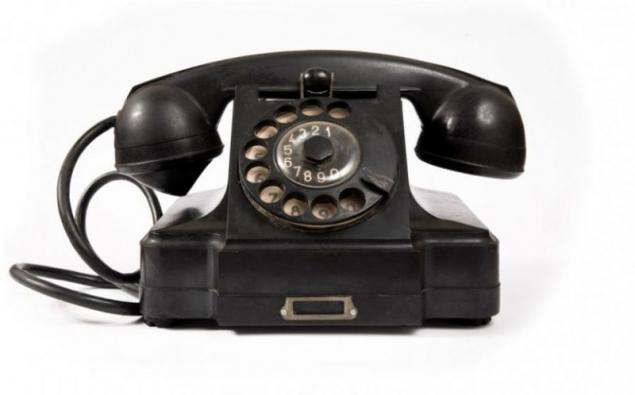
2. Video Dating
Sites and Dating apps are flourishing in the last ten years or so, but the basic concept of finding a couple of questionnaires is much older than the modern Internet and dates back to the beginning of video Dating. The first of these services, "Great Expectations" ("Great expectations"), opened its doors on Valentine's Day 1976. People bought a membership card, allowing them to visit certain centres, where they filled out questionnaires and recorded about yourself video. Ultimately, these services became extremely popular; during the 1970-1980-ies the owners received billions of dollars in profit.
However, soon invented the Internet that ruined everything. One of the first Dating sites, Match.com appeared in 1995. "Great expectations", which managed to become a national franchise, was shut down permanently only a few years later.
3. Handheld video games
Video games emerged in the 1970-ies and instantly won the love of both adults and children. People are so strongly tied to video games that are not willing to part with them even for a minute. They wanted to be able to carry them with you in your pocket everywhere. However, the technology at the time was extremely limited. However, this has not prevented some enterprising companies to get as close as possible to realizing the dream of most people.
So, Mattel has tried to improve their sports games by adding a red led dots and dashes. Later companies such as "Tiger" and "Nintendo" have started to use the LCD displays to gain a semblance of animation. Among the most popular handheld electronic games it is worth noting the series "Game & Watch" from Nintendo. Some of this kind of devices have dual or wide screens, and proposed adaptation of the popular arcade games like "Donkey Kong".
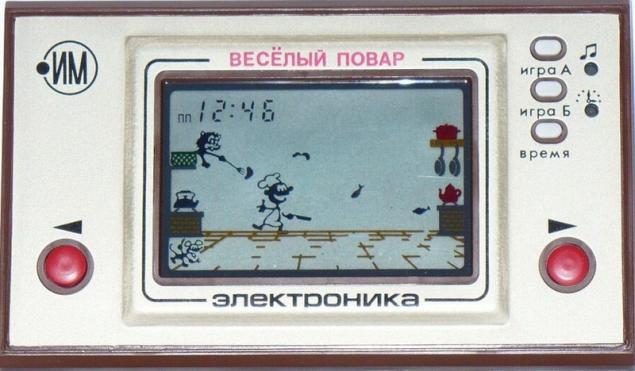
4. Message boards
When in the 1980-ies there appeared a modem with a stacked call, the Internet as we know it today essentially did not exist. Then it was a huge network that can be considered as the first web site- Bulletin Board Systems or BBSs (electronic Bulletin boards). Users had to connect via a dial-up connection, to leave a message, share files and even download illegal software (to the site at a time can connect only one user). Because at that time long distance telephone calls were expensive, message boards, mainly bred locally.
In the 1990-ies, when rapidly evolving technology has made it possible to chat and game functions on local Bulletin boards, the Internet was just beginning to enter the consciousness of people. However, in a short time he destroyed something that was getting to be a thriving culture. Today, there are about 300 electronic Bulletin boards BBS.
5. "Cartrivision"
The tape appeared in American homes in the late 1970-ies. Format war, which was accompanied by new innovations, were only on hand to consumers, as the price of the device was low. But everything changed with the emergence of the "Cartrivision", the first home video recorder.
It was incredibly ambitious invention. Its sales started in 1972. "Cartrivision" was considered an essential complement to television and sold under several different brands. He could record TV shows on plastic cartridges. Also, the device allowed to create a monochrome home videos using the integrated camera. Through retailers, anyone had the opportunity to purchase or rent the cartridges with records of Hollywood films.
Unfortunately, poor video quality and unreasonably high price (about $ 9,000 in terms of modern money) made the "Cartrivision" a complete failure.
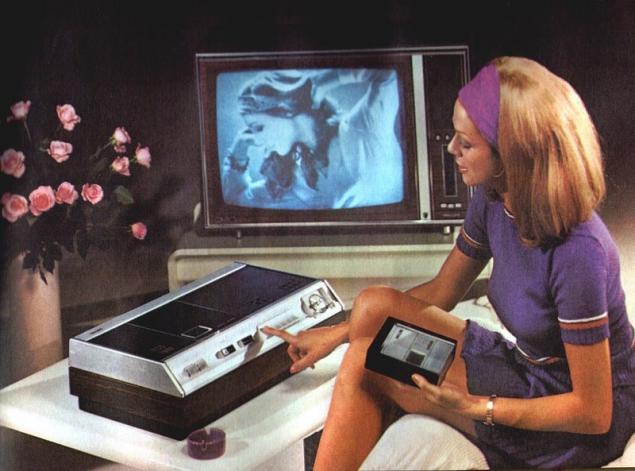
6. "Mikiphone"
In the 1980's "Sony Walkman" revolutionized music and paved the way for portable audio players such as "iPod". However, the history of portable devices for music began long before that. In 1924 there was "Mikiphone", portable gramophone player-sized box CD-ROM. It was marketed as a "pocket orchestra." Instead of dynamics, to amplify the sound "Mikiphone" used "resonator". Run it using the handle; it was typical of all music players of the time.
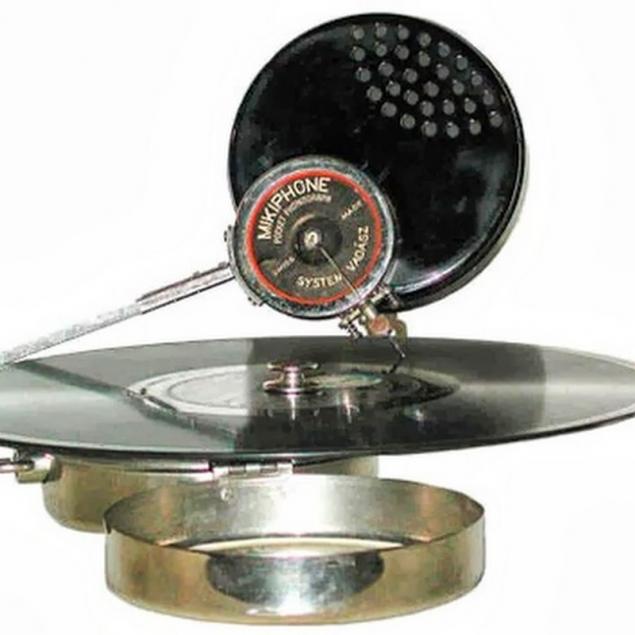
7. Zoopraksiskop
In 1877 Edward Meybridzha, the famous British photographer-landscape painter living in America, instructed to deal with photos old mystery. He needed to find the answer to the question about whether all four hooves of a horse leave the ground when she jumps. Muybridge created a series of special cameras to capture every phase of the movement of the horse.
The images were converted and analyzed with the help of zoopraksiskop, of his own invention Meybridzha. This circular projector was created the world's first moving pictures, which is very much like a modern animated image. A few dozen of these images are now held at Kingston Museum, alongside zoopraksiskop. And Yes, Meybridzha managed to prove that when a horse jumps, from the ground off all four of her hooves.
8. "Iter Auto"
In 1932, the Italian company attempted to create the world's first navigation device. "Iter Auto" was a console that connected to the speedometer of the car; she used a rolling replacement card to specify the path.
It was the first device that showed the position of the user in real time, but it stopped working when the driver turned the wrong way. Moreover, during long trips and you had to often change cards. Perhaps it is because of these disadvantages the device, "Iter Auto".
9. Selfie stick Hogg
Selfie sticks are not the technical wonders, but in recent years they sold like hotcakes. Time magazine even named them one of the greatest inventions of 2014, Alan cleaver found it very strange, because in his family album there is a grainy black-and-white photos, taken using a selfie stick a few decades ago.
Grandfather jib, Arnold Hogg, took the photo You see above, in 1926 with a device of his own invention. As You can see, it looks almost the same as today's selfie-stick.
Alan cleaver is not a fan of modern, selfie-sticks; he says: "We have become so closed that we don't even have friends that could take a picture of us". However, he admits that it would be nice if his grandfather has filed a patent for his invention.

10. "Telharmonium"
In the early 1900-ies of those who had phones that could call the operator and ask him to connect them to the "Telharmonium". This giant contraption was able to stream music via the telephone network subscribed subscribers.
"Telharmonium" was a musical instrument, weighing 200 tons, which occupied an entire floor of the building and consisted of a huge number of relays, generators, transformers and switchboards, connected to two keyboard panels. The musicians had to work 24 hours a day.
The works that they played, "Telharmonium" transformed into electrical signals, creating an eerie ringing melody. The sound was amplified with a special paper funnel attached to the handset (at the time the amps were not yet invented).
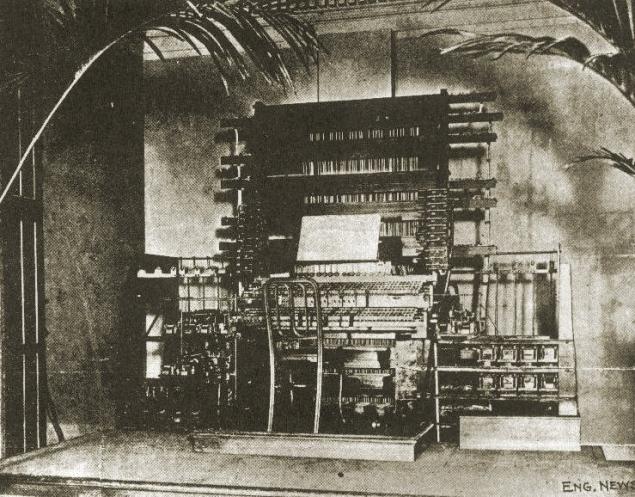
In an article published in the New York Times in 1906, it is said that mark TWAIN was fascinated by the "Telharmonium". He said: "Every time I see or hear a new wonder like this, I immediately want to delay your death... I can't die before you hear it." published
P. S. And remember, only by changing their consumption — together we change the world! ©
Source: muz4in.net/news/10_udivitelnykh_predshestvennikov_sovremennykh_tekhnologij/2017-01-02-42558
Described below are ten technologiesthat represent attempts to give consumers something that today we take for granted:
1. Phone services
Before the advent of personal computers the most popular device in which conducted transfer of information, had a telephone. A big part of what we now can give the smartphone was available through telephone services. For example, before almost every village USA could call a number and receive information about the current time and air temperature. Some of these services are still used.
By the mid-twentieth century, the list of phone services has increased considerably. It was added to the so-called "lines of communication for collective use" (they can be considered as the first social networks), and even music services, which on request was broadcast tunes and songs. In the 1990-ies the most popular of them were Moviefone, which now exists as an app.

2. Video Dating
Sites and Dating apps are flourishing in the last ten years or so, but the basic concept of finding a couple of questionnaires is much older than the modern Internet and dates back to the beginning of video Dating. The first of these services, "Great Expectations" ("Great expectations"), opened its doors on Valentine's Day 1976. People bought a membership card, allowing them to visit certain centres, where they filled out questionnaires and recorded about yourself video. Ultimately, these services became extremely popular; during the 1970-1980-ies the owners received billions of dollars in profit.
However, soon invented the Internet that ruined everything. One of the first Dating sites, Match.com appeared in 1995. "Great expectations", which managed to become a national franchise, was shut down permanently only a few years later.
3. Handheld video games
Video games emerged in the 1970-ies and instantly won the love of both adults and children. People are so strongly tied to video games that are not willing to part with them even for a minute. They wanted to be able to carry them with you in your pocket everywhere. However, the technology at the time was extremely limited. However, this has not prevented some enterprising companies to get as close as possible to realizing the dream of most people.
So, Mattel has tried to improve their sports games by adding a red led dots and dashes. Later companies such as "Tiger" and "Nintendo" have started to use the LCD displays to gain a semblance of animation. Among the most popular handheld electronic games it is worth noting the series "Game & Watch" from Nintendo. Some of this kind of devices have dual or wide screens, and proposed adaptation of the popular arcade games like "Donkey Kong".

4. Message boards
When in the 1980-ies there appeared a modem with a stacked call, the Internet as we know it today essentially did not exist. Then it was a huge network that can be considered as the first web site- Bulletin Board Systems or BBSs (electronic Bulletin boards). Users had to connect via a dial-up connection, to leave a message, share files and even download illegal software (to the site at a time can connect only one user). Because at that time long distance telephone calls were expensive, message boards, mainly bred locally.
In the 1990-ies, when rapidly evolving technology has made it possible to chat and game functions on local Bulletin boards, the Internet was just beginning to enter the consciousness of people. However, in a short time he destroyed something that was getting to be a thriving culture. Today, there are about 300 electronic Bulletin boards BBS.
5. "Cartrivision"
The tape appeared in American homes in the late 1970-ies. Format war, which was accompanied by new innovations, were only on hand to consumers, as the price of the device was low. But everything changed with the emergence of the "Cartrivision", the first home video recorder.
It was incredibly ambitious invention. Its sales started in 1972. "Cartrivision" was considered an essential complement to television and sold under several different brands. He could record TV shows on plastic cartridges. Also, the device allowed to create a monochrome home videos using the integrated camera. Through retailers, anyone had the opportunity to purchase or rent the cartridges with records of Hollywood films.
Unfortunately, poor video quality and unreasonably high price (about $ 9,000 in terms of modern money) made the "Cartrivision" a complete failure.

6. "Mikiphone"
In the 1980's "Sony Walkman" revolutionized music and paved the way for portable audio players such as "iPod". However, the history of portable devices for music began long before that. In 1924 there was "Mikiphone", portable gramophone player-sized box CD-ROM. It was marketed as a "pocket orchestra." Instead of dynamics, to amplify the sound "Mikiphone" used "resonator". Run it using the handle; it was typical of all music players of the time.

7. Zoopraksiskop
In 1877 Edward Meybridzha, the famous British photographer-landscape painter living in America, instructed to deal with photos old mystery. He needed to find the answer to the question about whether all four hooves of a horse leave the ground when she jumps. Muybridge created a series of special cameras to capture every phase of the movement of the horse.
The images were converted and analyzed with the help of zoopraksiskop, of his own invention Meybridzha. This circular projector was created the world's first moving pictures, which is very much like a modern animated image. A few dozen of these images are now held at Kingston Museum, alongside zoopraksiskop. And Yes, Meybridzha managed to prove that when a horse jumps, from the ground off all four of her hooves.
8. "Iter Auto"
In 1932, the Italian company attempted to create the world's first navigation device. "Iter Auto" was a console that connected to the speedometer of the car; she used a rolling replacement card to specify the path.
It was the first device that showed the position of the user in real time, but it stopped working when the driver turned the wrong way. Moreover, during long trips and you had to often change cards. Perhaps it is because of these disadvantages the device, "Iter Auto".
9. Selfie stick Hogg
Selfie sticks are not the technical wonders, but in recent years they sold like hotcakes. Time magazine even named them one of the greatest inventions of 2014, Alan cleaver found it very strange, because in his family album there is a grainy black-and-white photos, taken using a selfie stick a few decades ago.
Grandfather jib, Arnold Hogg, took the photo You see above, in 1926 with a device of his own invention. As You can see, it looks almost the same as today's selfie-stick.
Alan cleaver is not a fan of modern, selfie-sticks; he says: "We have become so closed that we don't even have friends that could take a picture of us". However, he admits that it would be nice if his grandfather has filed a patent for his invention.

10. "Telharmonium"
In the early 1900-ies of those who had phones that could call the operator and ask him to connect them to the "Telharmonium". This giant contraption was able to stream music via the telephone network subscribed subscribers.
"Telharmonium" was a musical instrument, weighing 200 tons, which occupied an entire floor of the building and consisted of a huge number of relays, generators, transformers and switchboards, connected to two keyboard panels. The musicians had to work 24 hours a day.
The works that they played, "Telharmonium" transformed into electrical signals, creating an eerie ringing melody. The sound was amplified with a special paper funnel attached to the handset (at the time the amps were not yet invented).

In an article published in the New York Times in 1906, it is said that mark TWAIN was fascinated by the "Telharmonium". He said: "Every time I see or hear a new wonder like this, I immediately want to delay your death... I can't die before you hear it." published
P. S. And remember, only by changing their consumption — together we change the world! ©
Source: muz4in.net/news/10_udivitelnykh_predshestvennikov_sovremennykh_tekhnologij/2017-01-02-42558


















